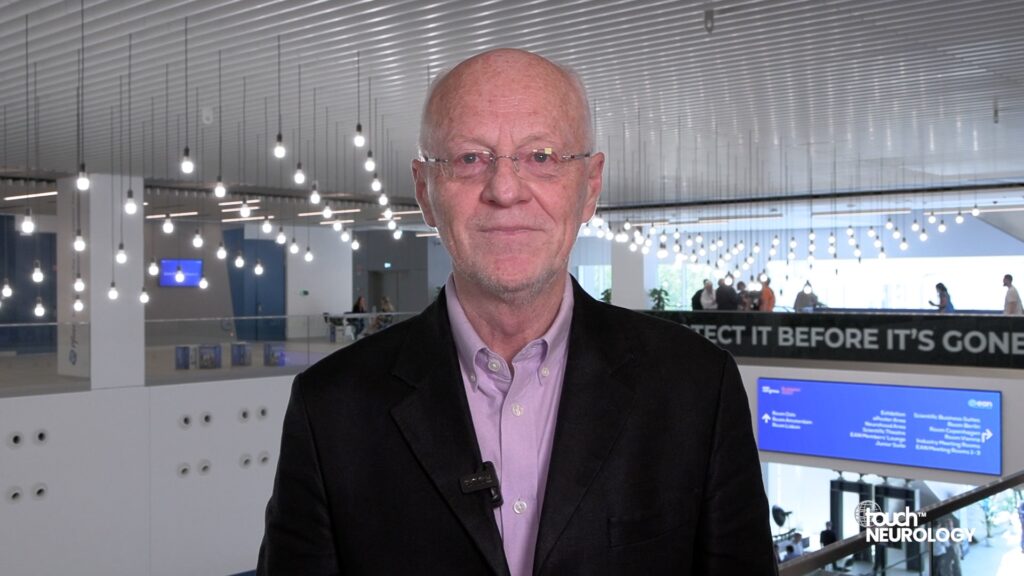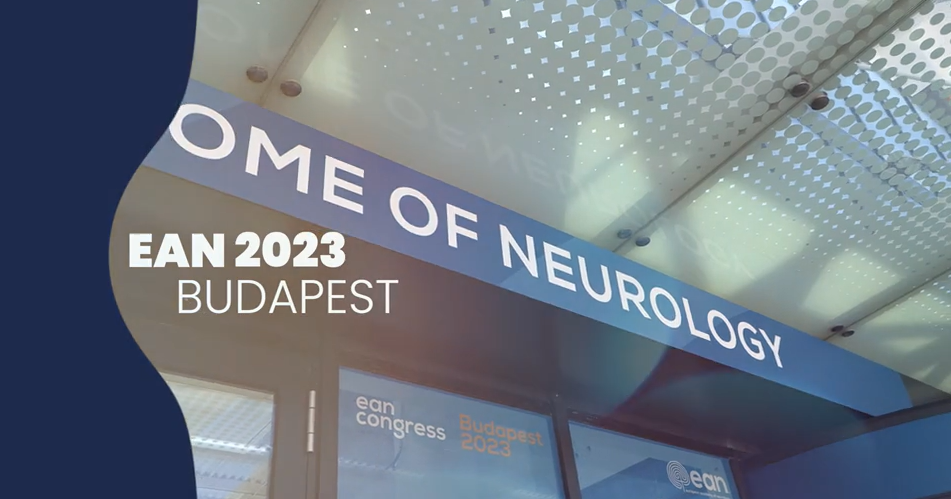Migraine is a debilitating disease that impacts millions of lives and imposes a high socioeconomic burden. Although the range of acute and preventive treatments have increased over time, many unmet needs remain.1 Recent advances in migraine were a hot topic at the American Academy of Neurology (AAN) 2019 Annual Meeting, which was held from 4–10 May in Philadelphia, Pennsylvania, USA.
Many migraine sufferers require preventive treatment to reduce the occurrence of acute attacks. However, poor tolerability, side effects and loss of beneficial effect limit the use of available preventive treatments.2 One of the most exciting recent developments in migraine prevention has been the approval of calcitonin gene-related peptide (CGRP) monoclonal antibodies for the treatment of both episodic and chronic migraine. To date, three agents – erenumab (Aimovig®), fremanezumab (Ajovy®), and galcanezumab (Amgality®) – have received regulatory approval, and a fourth, eptinezumab, has completed phase III trials, with US Food and Drug Administration (FDA) approval expected in early 2020.3
At the AAN meeting, Novartis presented new long-term data on erenumab. Results from a one-year open-label extension of a phase II study (NCT02066415) showed that more than two-thirds (72%) of patients with chronic migraine converted to episodic migraine by their last dose of erenumab. These patents also showed a reduction of 11 monthly migraine days (MMD) at Week 52, from a baseline of 17 MMD.4 In addition, one-year data from the phase III STRIVE study (STudy to evaluate the efficacy and safety of erenumab in migRaIne preVEntion; NCT02456740) showed sustained efficacy, with 65% (140 mg dosage) and 61% (70 mg dosage) of patients experiencing ≥50% reduction in MMD. No new safety signals were identified.5
Teva also presented new data on their CGRP monoclonal antibody, fremanezumab, across 13 abstracts.6 Highlights included the results of a one-year study involving 1,110 patients with chronic migraine, showing that 54% of patients receiving quarterly dosing and 59% of patients receiving monthly dosing achieved ≥50% reduction in MMD at Month 12. Fremanezumab use was also associated with reduced acute medication use and improvements in disability. An analysis of a one-year study involving 780 patients with episodic migraine showed sustained efficacy, reduced acute medication use, and improvements in disability, which were maintained through 12 months of treatment. A post-hoc efficacy analysis of 813 patients with chronic migraine at baseline, found that 67% of patients converted to episodic migraine over the study period. A safety analysis of 1,890 patients showed that the most common adverse events (AEs) were injection-site reactions, which occurred in 26–33% of all patients. Treatment discontinuation due to AEs occurred in 4% of patients. In another study, quality of life was found to improve with long-term treatment, and patient satisfaction was high.6
Eli Lilly and Company presented results from pooled subgroup analyses of efficacy data from the phase II EVOLVE-1 and EVOLVE-2 studies (n=1,773). These analyses demonstrate a reduction in MMD with galcanezumab compared with placebo in patients with low- and high-frequency episodic migraine, as well as improved functioning and reduced disability.7
While the CGRP monoclonal antibodies continue to show impressive findings in migraine prevention, there remains a need for more effective acute treatments for breakthrough attacks. The most widely used acute prescription drugs, triptans, have cardiovascular contraindications, are not effective in everyone and have been associated with high recurrence rates in those who do respond.1 The limitations of existing acute medication were highlighted in a presentation of a study investigating nonadherence to acute migraine medication (AMM) guidelines. The study involved 193 patients with migraine who had prescriptions for either a triptan or an ergot. Participants completed a three-month electronic headache diary, which included the characteristics of the attack and medication use. If the medication was taken when the pain was mild, it was considered as having been taken early. Results showed that migraines involving nausea (odds ratio [OR], 0.22), or nausea with vomiting (OR, 0.04), were associated with lower odds of using AMM early compared with migraines with no nausea. People with lower annual incomes ($50,000 or less annually) were less likely to take AMMs (OR, 2.04), which may indicate insufficient access to more effective and expensive AMMs.8
However, there was positive news regarding acute treatment. Biohaven presented the results of study 303, a phase III clinical trial (NCT03461757) evaluating rimegepant (Zydis®) orally dissolving tablet (ODT). Rimegepant is an oral, single-dose, selective and potent small molecule CGRP receptor antagonist in development for the acute treatment of migraine. The study evaluated a novel, orally dissolving tablet formulation of rimegepant that is intended to speed up the onset of action. Time to peak concentration is 1.50 hours for the ODT, compared with 1.99 hours for the original tablet formulation.9 A total of 1,375 patients, who had experienced two to eight moderate or severe monthly migraine attacks over the previous three months, were randomised 1:1 to rimegepant or placebo.9
Results showed a difference in the primary endpoints of pain freedom and freedom from most bothersome symptom, compared with the placebo group, in as little as 15 minutes. Pain relief was achieved at 60 minutes for 36.8% of patients receiving rimegepant compared with 31.2% receiving placebo (p=0.314). At 90 minutes, half of the patients in the rimegepant arm experienced pain relief (49.6%) compared with 37.2% in the placebo arm (p<0.0001). At 2 hours, pain relief was 59.3% versus 43.3%, for rimegepant and placebo, respectively (p<0.0001). Sustained pain relief occurred in 47.8% and 27.7% of patients for 2–24 hours and for 42.2% and 25.2% for 2–48 hours, in the rimegepant and placebo groups, respectively (p<0.0001). Sustained freedom from most bothersome symptom was achieved for 27.1% and 17.7% for 2–24 hours and for 23.2% and 16.4% for 2–48 hours, for rimegepant and placebo groups, respectively (p<0.01). In addition, a significantly greater percentage of the rimegepant ODT group returned to normal functioning by 2 hours compared to the placebo group (38.1% versus 25.8%; p=0.0025). A single dose of rimegepant was associated with a range of beneficial effects over 48 hours including freedom from pain (p<0.0001), pain relief (p<0.0001), freedom from the most bothersome symptom (p=0.0018), and freedom from functional disability (p<0.0001). The majority of patients treated with rimegepant (85%) did not use any rescue medications.9,10
The safety profile of rimegepant was consistent with previous studies (NCT03235479, NCT03237845 and NCT01430442). The most common AEs associated with rimegepant were nausea and urinary tract infection, each of which occurred in ≤1.6% of patients. Treatment-related AEs occurred in 6.9% of patients in the rimegepant arm compared with 5.2% in the placebo group. There were no serious AEs in either group. One patient treated with placebo and one patient treated with rimegepant showed elevated liver function test results >3x the upper limit of normal (ULN). When liver function test results were pooled across the three trials (n=3,556) rimegepant was similar to placebo in terms of aminotransferase (alanine transaminase [ALT] or aspartate transaminase [AST]) levels above ULN and no patients experienced elevations in bilirubin >2x ULN.9,10
In summary, the AAN meeting provided further evidence that CGRP monoclonal antibodies are effective treatments for migraine prevention. There remains a need for real world data to establish optimal strategies to manage treatment over time. The findings of a pivotal phase III trial also show that rimegepant is a much-needed effective treatment for acute migraine with excellent tolerability. These treatments have been incorporated into the latest recommendations of the American Headache Society.11
References
1. Antonaci F, Ghiotto N, Wu S, et al. Recent advances in migraine therapy. Springerplus. 2016;5:637.
2. Loder EW, Rizzoli P. Tolerance and loss of beneficial effect during migraine prophylaxis: clinical considerations. Headache. 2011;51:1336–45.
3. Sacco S, Bendtsen L, Ashina M, et al. European Headache Federation guideline on the use of monoclonal antibodies acting on the calcitonin gene related peptide or its receptor for migraine prevention. J Headache Pain. 2019;20:6.
4. Lipton RB, Tepper SJ, Silberstein S, et al. Erenumab in chronic migraine. Presented at: The 71st Annual Meeting of the American Academy of Neurology, Philadelphia, PA, USA; 4–10 May 2019.
5. Chou D, Goadsby P, Reuter U, et al. A controlled trial of erenumab for episodic migraine. Presented at: The 71st Annual Meeting of the American Academy of Neurology, Philadelphia, PA, USA; 4–10 May 2019.
6. Teva Pharmaceutical Industries Ltd. Teva to present new long-term data on efficacy and safety of fremanezumab at 2019 American Academy of Neurology Annual Meeting, 2019. Available at: http://ir.tevapharm.com/investors/press-releases/press-release-details/2019/Teva-to-Present-New-Long-Term-Data-on-Efficacy-and-Safety-of-Fremanezumab-at-2019-American-Academy-of-Neurology-Annual-Meeting/default.aspx (Accessed 23 May 2019).
7. Silberstein S, Stauffer VL, Day KA, et al. Phase 3 studies (EVOLVE-1 & EVOLVE-2) of galcanezumab in episodic migraine: subgroup analyses of efficacy by low- versus high-frequency of migraine headaches. Presented at: The 71st Annual Meeting of the American Academy of Neurology, Philadelphia, PA, USA; 4–10 May 2019.
8. Lofchie A, Butler N, Robbins M, Seng E. Predictors of non-adherence with acute migraine medications. Presented at: The 71st Annual Meeting of the American Academy of Neurology, Philadelphia, PA, USA; 4–10 May 2019.
9. Biohaven Pharmaceuticals. Biohaven delivers positive phase 3 results with rimegepant Zydis® orally dissolving tablet (ODT): rapid and lasting benefit for the acute treatment of migraine, 2019. Available at: www.biohavenpharma.com/investors/news-events/press-releases/12-03-2018 (Accessed 23 May 2019).
10. NeurologyLive. Orally dissolving rimegepant rapidly lowers pain, improves symptoms for acute migraine, https://www.neurologylive.com/conferences/aan-2019/orally-dissolving-rimegepant-rapidly-lowers-pain-improves-symptoms-for-acute-migraine (Accessed 22 May 2019).
11. The American Headache Society position statement on integrating new migraine treatments into clinical practice. Headache. 2019;59:1–18.









